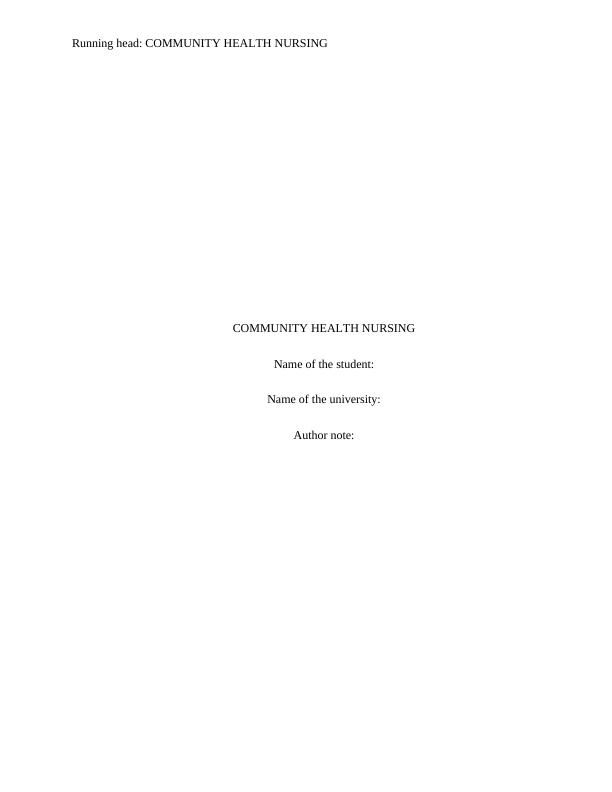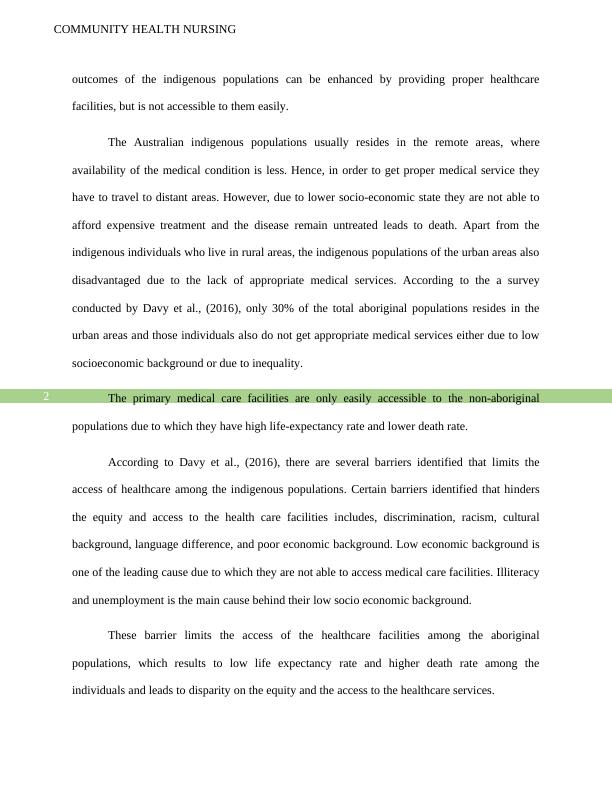Community Health Nursing Australia Case Study 2022
The assignment requires selecting and summarizing two peer-reviewed journal articles on health care equity and access for Aboriginal and Torres Strait Islander peoples, as well as describing and discussing evidence-based nursing interventions to promote equity and access for Indigenous Australians.
9 Pages2304 Words12 Views
Added on 2022-10-18
Community Health Nursing Australia Case Study 2022
The assignment requires selecting and summarizing two peer-reviewed journal articles on health care equity and access for Aboriginal and Torres Strait Islander peoples, as well as describing and discussing evidence-based nursing interventions to promote equity and access for Indigenous Australians.
Added on 2022-10-18
ShareRelated Documents
End of preview
Want to access all the pages? Upload your documents or become a member.
Health Disparities and Cultural Competent Care for Australian Aboriginals
|9
|2384
|74
Health and Well-being as Human Rights: Nursing Assignment
|6
|1404
|323
Infant Mortality in Australian Aboriginals: A Critical Paper on Primary Health Care
|12
|3212
|87
NRS81001 Nursing in the Australian Context Assessment 2022
|9
|2674
|24
Community Health and Disease Prevention
|12
|3104
|441
Healthcare Challenges for Aboriginal Peoples
|19
|1771
|82



